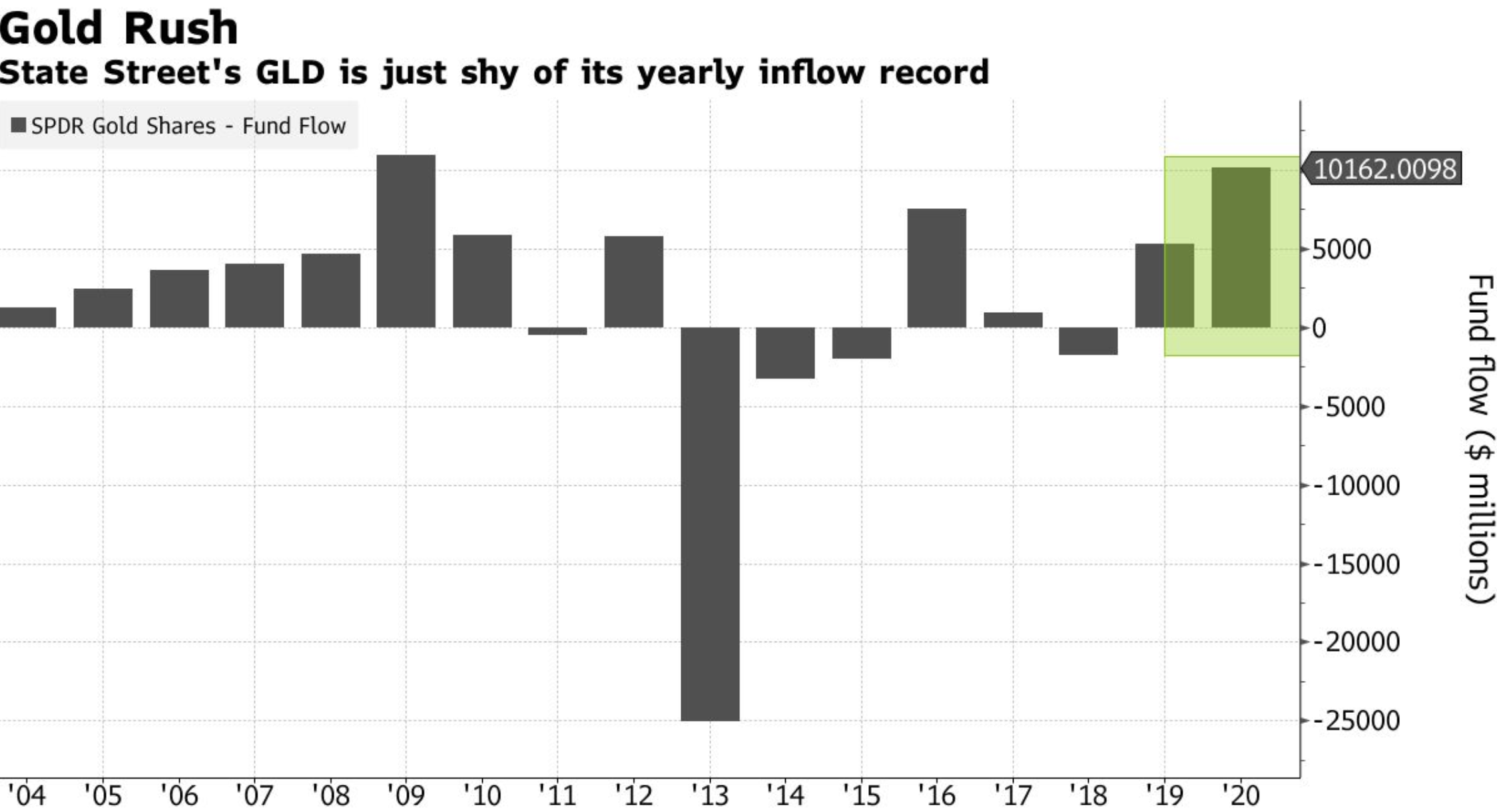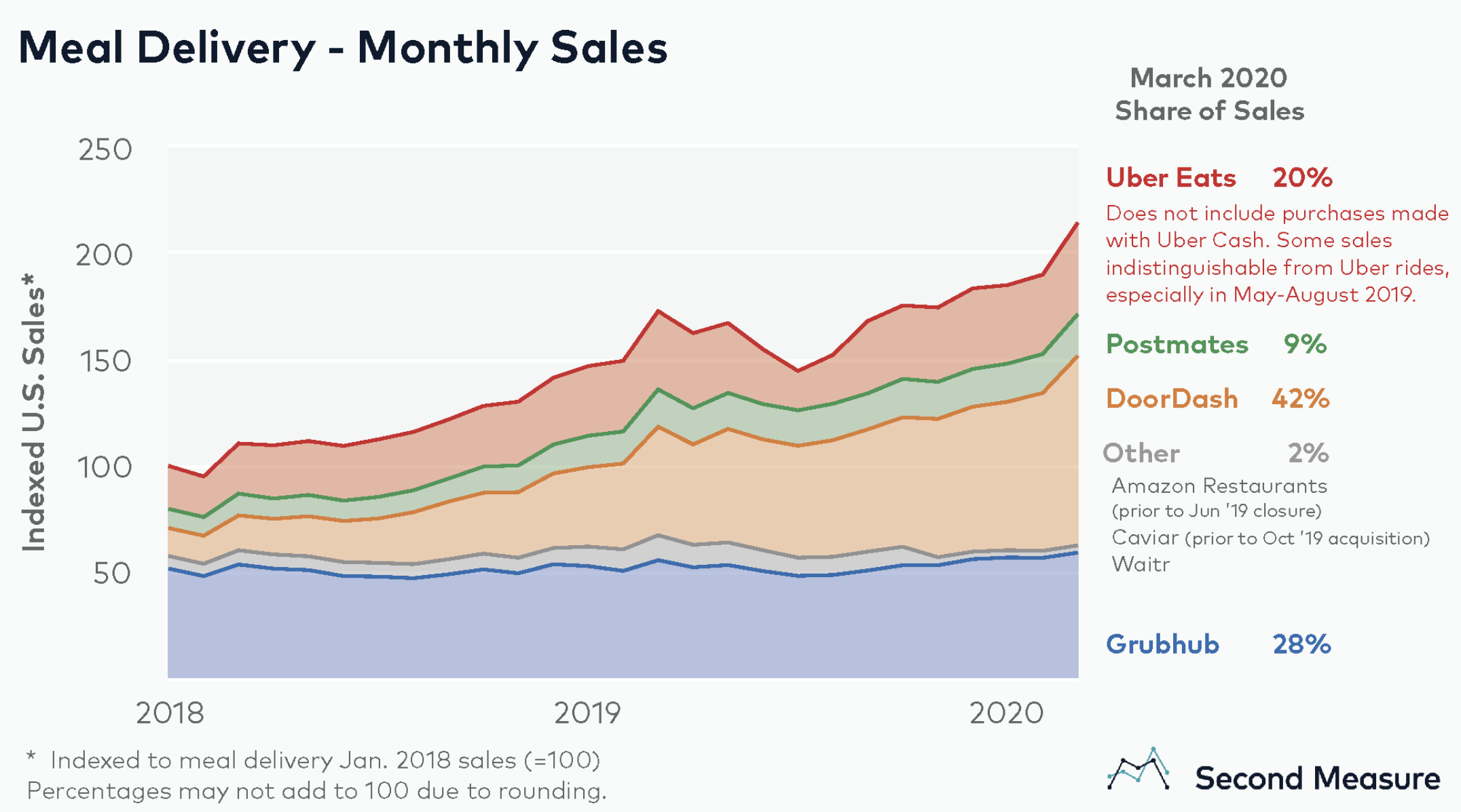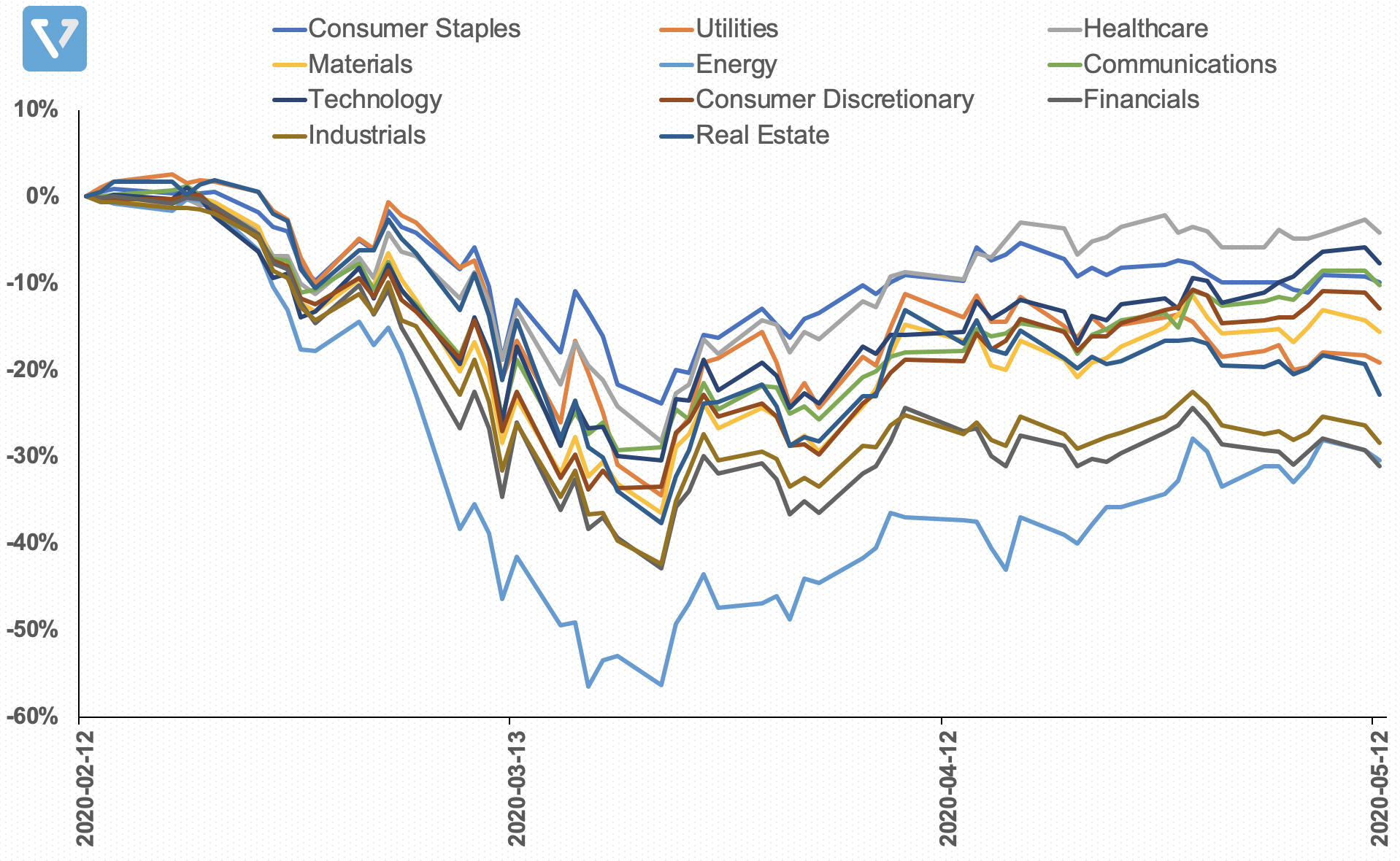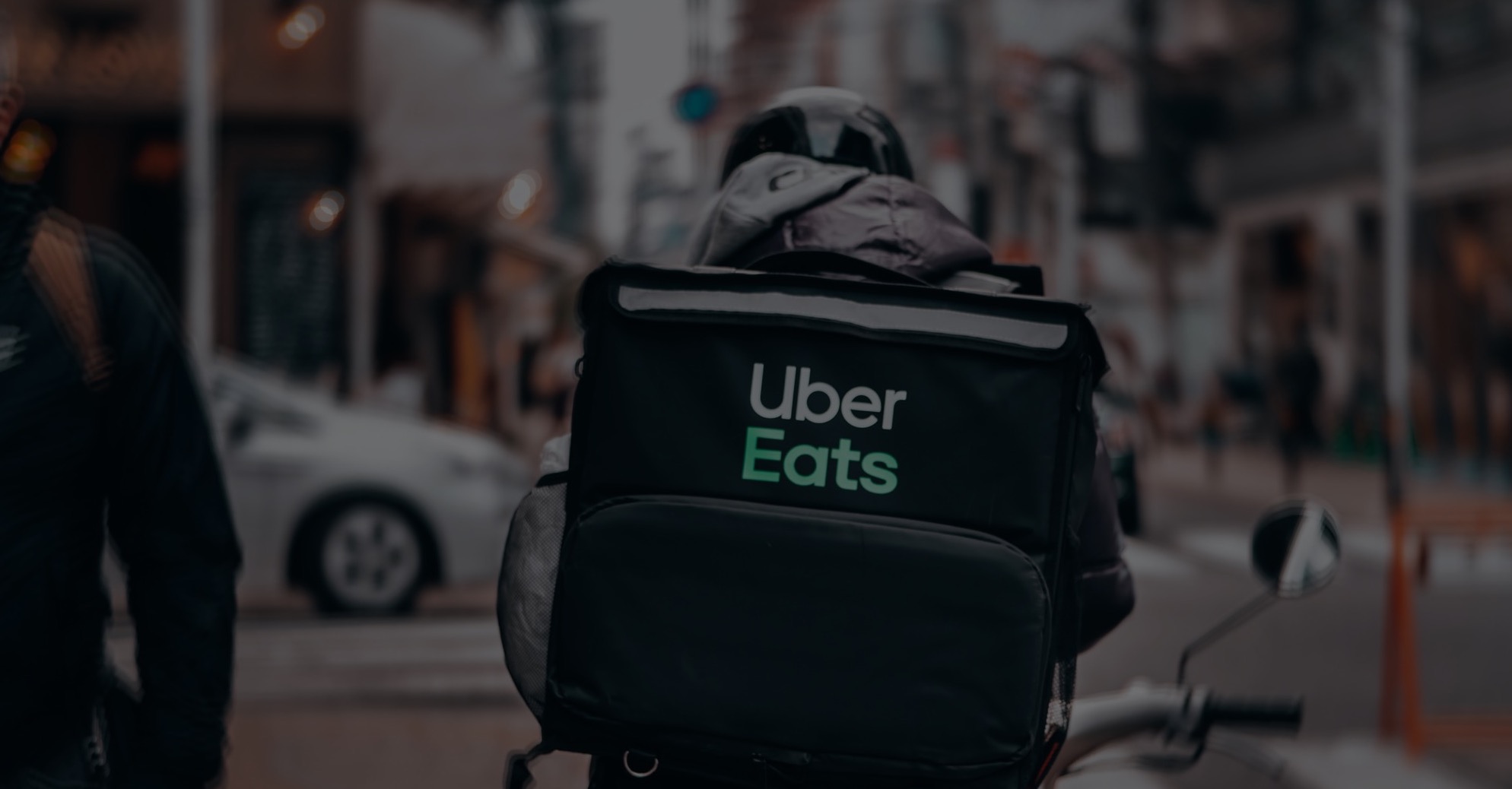Uber potentially buying Grubhub and other news
In this week’s update: US central bank buying Bond ETFs; Investors piling into gold; Uber in discussions to buy Grubhub; and an uneven US market recovery.
The US Central Bank starts buying Bond ETFs starting Tuesday (May 12th 2020)
What is it? As part of the COVID-19 stimulus package, the Fed (the US Central Bank) will be buying corporate debt via purchases of Bond ETFs to inject liquidity into the debt market. The Fed has hired BlackRock (ticker: BLK) to manage the effort, which started Tuesday, May 12th 2020. This corporate debt buying program will occur in three stages: (1) stabilization, (2) ongoing monitoring, and (3) reduction in support. We’ve just entered stage 1.
Why does it matter? The Fed has never bought ETFs nor corporate debt before. Historically, it has only purchased US Treasury bonds (US Government debt). The buying program was initially announced in March and has helped calm the market. As a result, companies significantly affected by the global lockdown such as Boeing (ticker: BA) and Carnival Corp (ticker: CCL) were able to tap capital markets and source cash to fund operations.
This program is a continuation of the trend where the Fed is the lender of last resort. When push comes to shove, capitalism erodes to socialism.
Investors are piling into gold
What is happening? Despite a recent strong rally in US equities (NASDAQ specifically), investors are funneling funds into gold ETFs. Both State Street’s SPDR Gold Share ETF (ticker: GLD) and iShares Gold Trust (ticker: IAU) are seeing near-record inflows.

Figure 1: GLD ETF inflow is near record high of April 2009. Data Source
Why is this happening? Investors are likely hedging against two possible scenarios: (1) They are concerned that equities will give up recent gains as more economic data is released; (2) They are concerned about over-inflation due to expanding money supply driven by the large Fed stimulus. Risk of inflation is higher if the economy recovers rapidly; the extra cash in the economy will trigger higher-than-expected inflation.
Uber in talks to acquire Grubhub
The food delivery space in the US
It’s no secret that the food delivery business is a hyper competitive business. The unit economics of the business is more challenging than a ride-sharing business. In the ride-sharing business, Uber shares the fee paid by the passenger with the driver (two-way split). In contrast, in the food-delivery space, the fee that the customer pays is split between the driver, Uber and the restaurant (three-way split).
Currently, the food delivery space in the US is dominated by three large players: DoorDash, Grubhub, and Uber Eats. DoorDash (which is privately owned and backed by Softbank) and Grubhub (ticker: GRUB) have about 42% and 28% market share respectively, while Uber Eats has about 20%. See Figure 2 for a breakdown.

The reason to consolidate
During this global lockdown, Uber Eats has been a bright spot for the company. Uber’s core ride-sharing business saw an 80% drop in global number of rides in Q1 2020, resulting in a loss of US $2.9 billion (2X higher than same period last year). Meanwhile, Uber Eats’ revenue increased by 50%, as more people are stuck at home, increasing their reliance on online food delivery. Nonetheless, the business unit is still not profitable, contributing US $313 million in losses.
Consolidation will help profitability. By reducing the number of players in the food delivery space, Uber can reduce consumer and driver incentives. Therefore, it makes sense for Uber, which has about US $8.2 billion in cash and cash equivalents, to attempt to consolidate the market.
Last year, under the encouragement of SoftBank (which is an investor in both Uber and DoorDash), Uber held discussions to consolidate its food delivery service with DoorDash, but DoorDash chose to remain independent. Now, if talks of merger between Uber and Grubhub are successful, it will create a market where there are only two dominant players, where the combination of Uber Eats and Grubhub will have close to 50% market share.
News of the Uber / GrubHub discussion leaked, however, pushing Grubhub’s share price up to 29% at market close (trading was halted due to the speed of the rise). Meanwhile, Uber’s share price closed 2.3% higher.
US Stock Market has rebounded since its low in middle of March
Seemingly divorced from economic realities, the US stock market has recovered most of its losses since March. The recovery is not equally distributed, however. Figure 3 below shows the performance of the market, broken down by different sectors. The top three sectors are Healthcare, Technology and Communications, while Energy, Financials and Industrials are the bottom three performers.

This trend is inline with the COVID-19 and global lockdown realities.
- While global commerce has largely stopped due to the pandemic, companies in the Healthcare, Technology and Communications sectors still produce products and services that are needed even during lockdown or that can be distributed through digital/online means.
- Meanwhile, Energy, Financials and Industrials are the most severely impacted because large swaths of manufacturing and transportation are stopped, creating excess energy supply, which in turn pushes oil prices down to record lows. Meanwhile, unemployment numbers have skyrocketed – increasing the number of defaults and non-performing loans, which adversely affects profitability of companies in the financial sectors.









